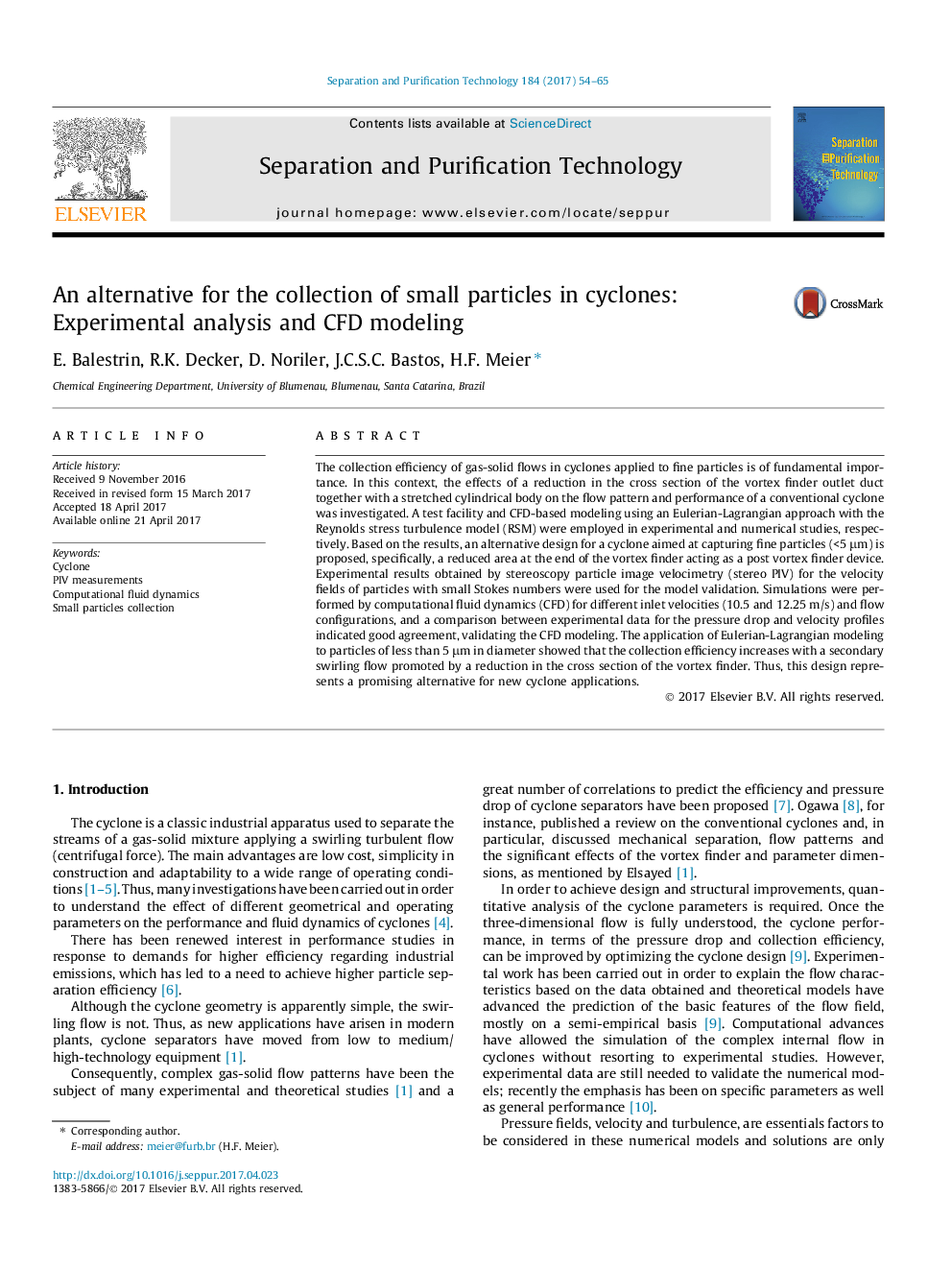| Article ID | Journal | Published Year | Pages | File Type |
|---|---|---|---|---|
| 4989734 | Separation and Purification Technology | 2017 | 12 Pages |
Abstract
The collection efficiency of gas-solid flows in cyclones applied to fine particles is of fundamental importance. In this context, the effects of a reduction in the cross section of the vortex finder outlet duct together with a stretched cylindrical body on the flow pattern and performance of a conventional cyclone was investigated. A test facility and CFD-based modeling using an Eulerian-Lagrangian approach with the Reynolds stress turbulence model (RSM) were employed in experimental and numerical studies, respectively. Based on the results, an alternative design for a cyclone aimed at capturing fine particles (<5 μm) is proposed, specifically, a reduced area at the end of the vortex finder acting as a post vortex finder device. Experimental results obtained by stereoscopy particle image velocimetry (stereo PIV) for the velocity fields of particles with small Stokes numbers were used for the model validation. Simulations were performed by computational fluid dynamics (CFD) for different inlet velocities (10.5 and 12.25 m/s) and flow configurations, and a comparison between experimental data for the pressure drop and velocity profiles indicated good agreement, validating the CFD modeling. The application of Eulerian-Lagrangian modeling to particles of less than 5 μm in diameter showed that the collection efficiency increases with a secondary swirling flow promoted by a reduction in the cross section of the vortex finder. Thus, this design represents a promising alternative for new cyclone applications.
Related Topics
Physical Sciences and Engineering
Chemical Engineering
Filtration and Separation
Authors
E. Balestrin, R.K. Decker, D. Noriler, J.C.S.C. Bastos, H.F. Meier,
